I was cleaning and filing old papers in my office, when I found “old” books about Silicon Valley and noticed how this amazing region has not really changed in the last 30 years. Let me just elaborate. The first book I looked at is Silicon Valley Fever.
Here is the back cover:
The next one is The New Venturers
with its back cover too:
Both were written in the mid-eighties. The New Venturers does not seem to be printed anymore and I wrote on Amazon in 2009, when I bought it, “In the mid 80s John Wilson published this book about venture capital. At the time, it was about business and how venture capital works. It has now become a history book and it shows how Silicon Valley developed in part thanks to venture capital. It is full of anecdotes, facts and figures. A great book… ”
Silicon Valley Fever is also out of print and there is no review for that one on Amazon! It is also a book I enjoyed reading. As a funny coincidence, the authors began their book with their history of Apple whereas my first chapter was the history of Google. Each decade has its role models. There is a section about Women and Entrepreneurship that Pemo Theodore would certainly appreciate: “The Silicon Valley has been called “one of the last great bastions of male dominance” by the local Peninsula Times Tribune. […] They are under-represented in management and administration. Few women have technical or engineering backgrounds. […] Why there are few women in positioning of responsability in Silicon Valley is complex and puzzling. Until recently, the overwhelming majority of engineering garduates were men. […] Scientific and engineering professionals in the finance community and in start-ups are likely to be men: these power-brokers rely exclusively on tehir personal networks. […] Twenty of the largest publicly held Silicon Valley firms listed a total of 209 persons as corporate officers in 1980; only 4 were women. The board of directors of these 20 firms include 150 directors. Only one was a woman: Shirley Hufstedler, serving on the board of Hewlett-Packard.” But the authors are optimistic: they explain that any woman with a technical background or an interest in high-tech has opportunities: “A Martian with three heads could find a job in Silicon Valley. So for women with a technical background, it’s terrific. […] An exception to masculine dominance is Sandy Kurtzig. “I wanted to start in a garage like HP, but I didn’t have one. So I started in a second bedroom of my apartment.” At first, Kurtzig did sales, bookkeeping and management of her start-up. As long as she had only five or six employees, they worked out of her apartment. It went into rapid growth and had annual sales in 1982.”
Part I of the book is historical, part II is the culture of Silicon Valley and part III is about its future (as foreseen in 1984). The final book I found is certainly not out of print. Written 10 years later by Annalee Saxenian, Regional Advantage is the reference book about Silicon Valley. It is one of my bibles. Saxenian compares the culture of Silicon Valley and Route 128 (the Boston cluster).
Funnily enough, she had this honnest recognition in 1998: “In 1979, I was a graduate student at Berkeley and I was one of the first scholars to study Silicon Valley. I culminated my master’s program by writing a thesis in which I confidently predicted that Silicon Valley would stop growing. I argued that housing and labor were too expensive and the roads were too congested, and while corporate headquarters and research might remain, I was convinced that the region had reached its physical limits and that innovation and job growth would occur elsewhere during the 1980s. As it turns out I was wrong.” (Source: A climate for Entrepreneurship)
Let me just put here pictures of the preface of the book that you can find on Amazon or Google books. It is enlighting and will be my conclusion of this post: Silicon Valley was and is the innovation center with many ups and downs that these three books describe with their own style.

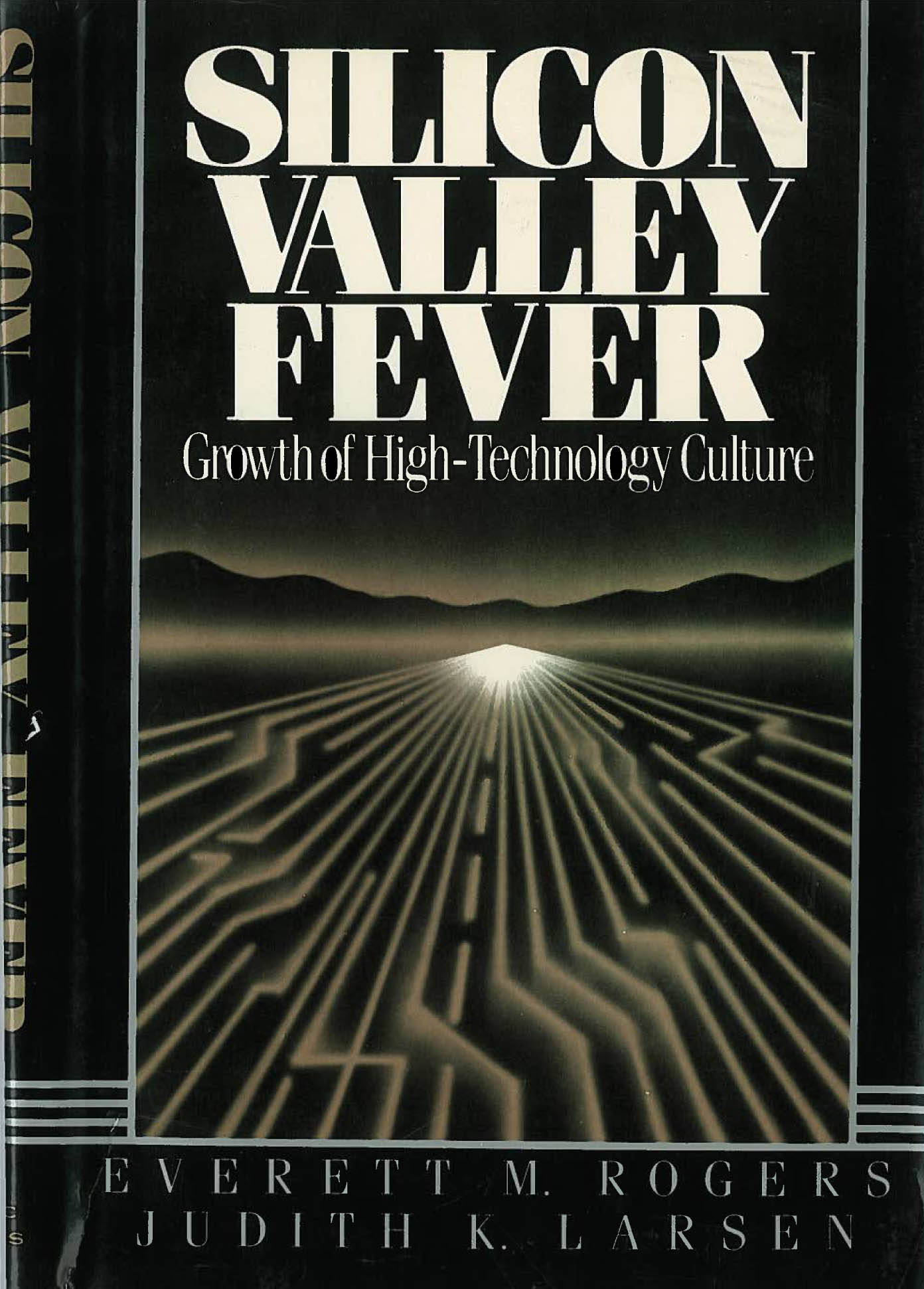
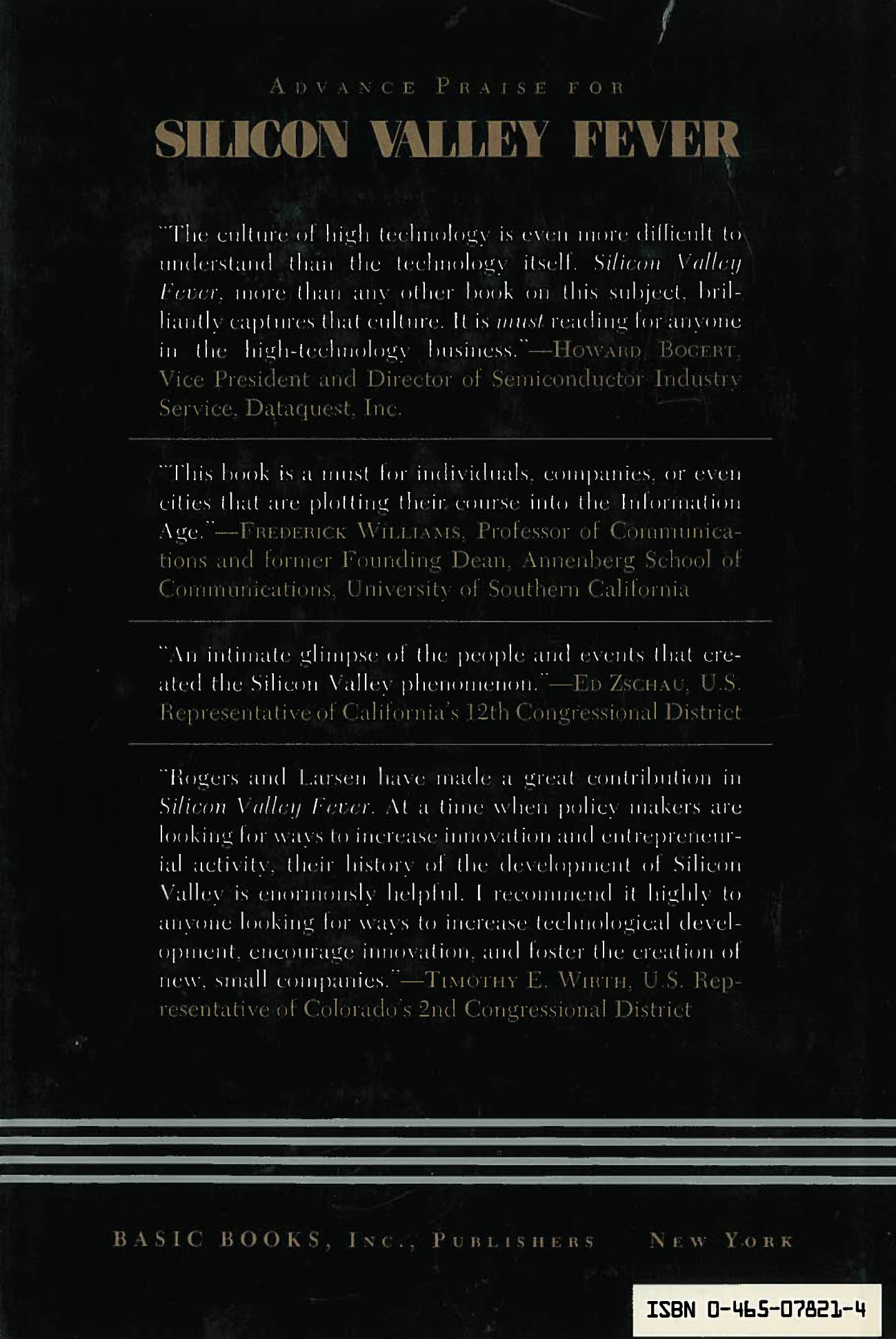
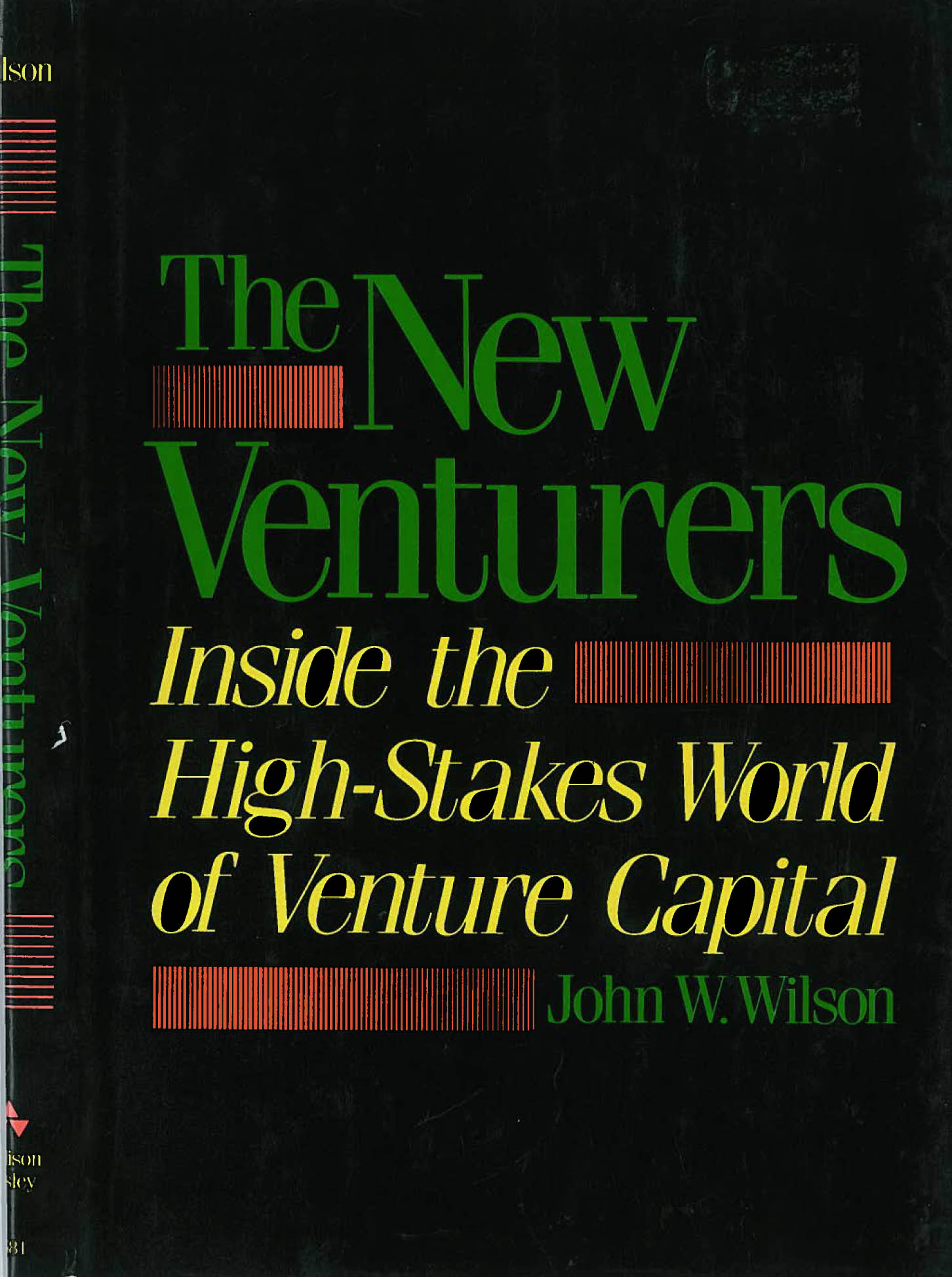
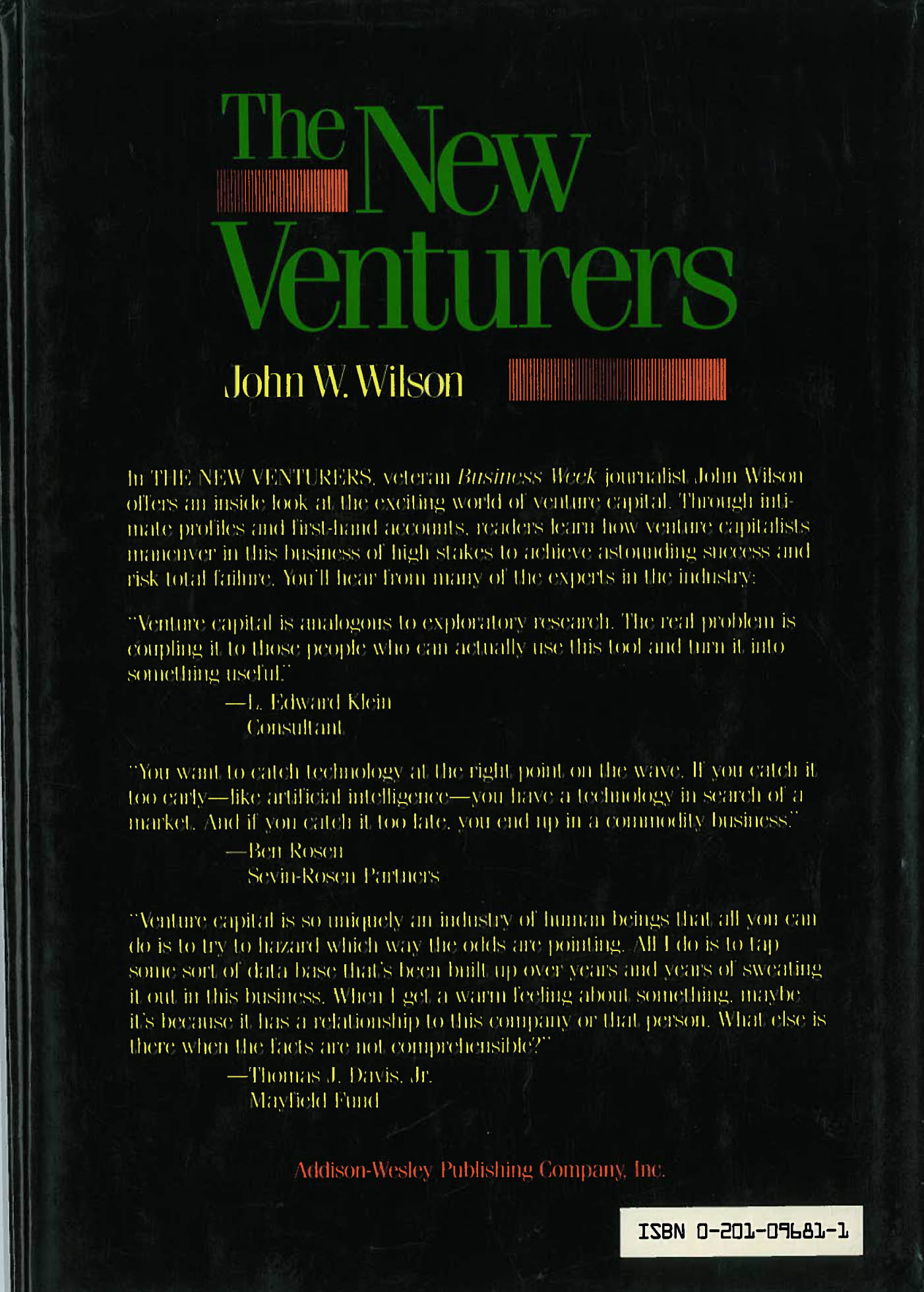

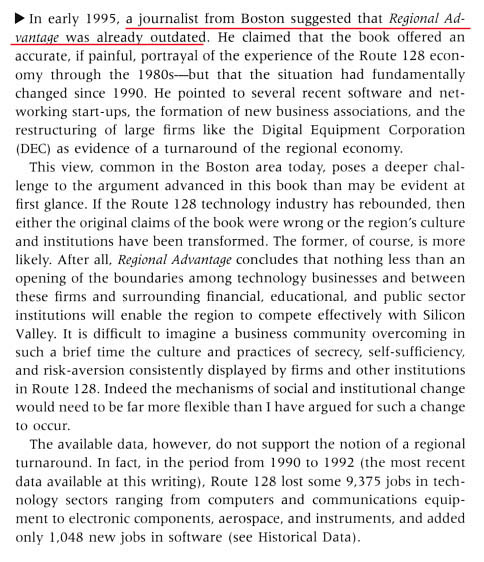
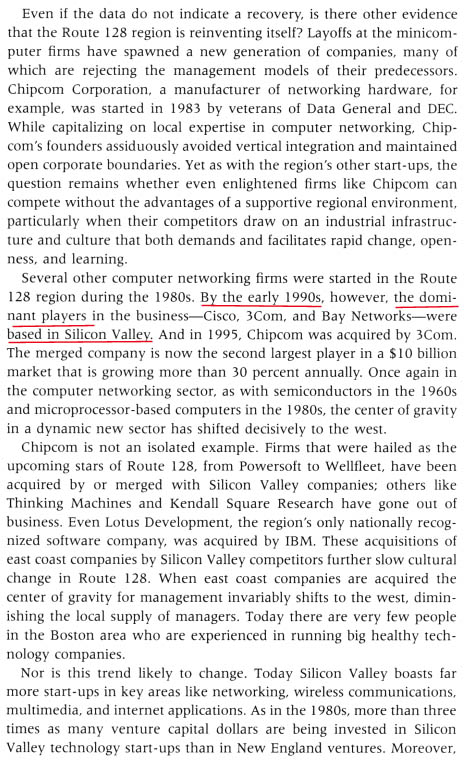
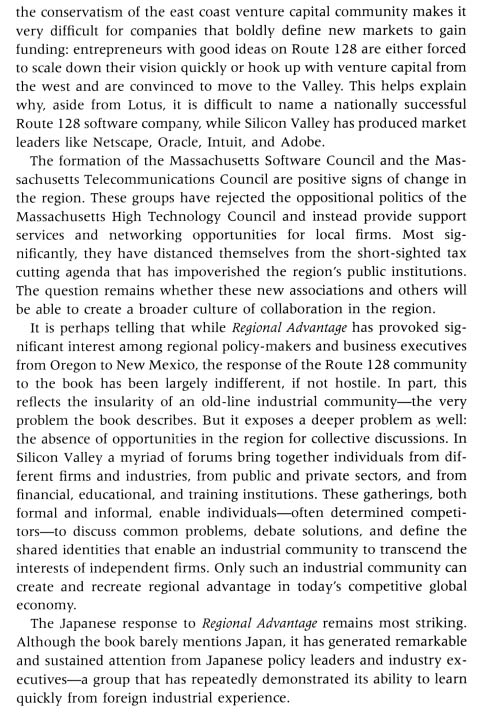
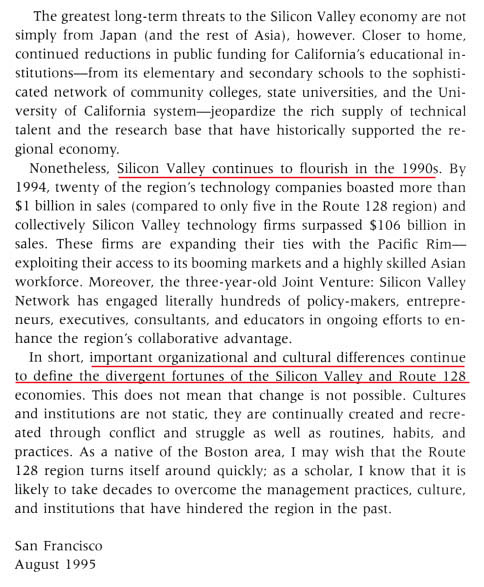
Pingback: Start-Up : le livre » Blog Archive » Innovation darwinienne et lamarckienne
Pingback: Start-Up: the book » Blog Archive » Darwinian and Lamarckian innovation - by Pascal Picq